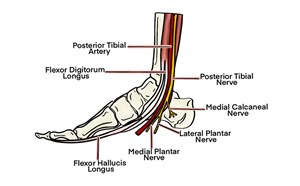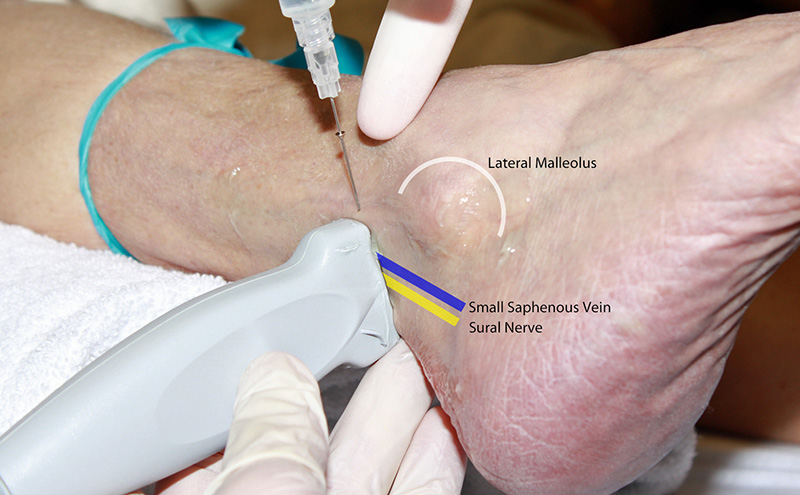
Sural Nerve Block
Leonard V. Bunting, MD, FACEP
I. Introduction and Indications
- The sural nerve is a sensory nerve that provides cutaneous innervation to the posterior calf, lateral ankle and foot.
- It is a small and superficial nerve that can be difficult to visualize with ultrasound, but the use of ultrasound does improve the success rate of this block.1
Anatomy
- The sural nerve is formed by branches of the common peroneal and tibial nerves.
- The sural nerve courses posterior between the heads of the gastrocnemius muscle and emerges anterolateral to the Achilles tendon.
- At the ankle it passes posterior to the lateral malleolus where it is associated with the small saphenous vein.
Indications
- Injuries to the lateral foot
- 5th metatarsal fracture pain is mostly relieved by this block and may be all that is required. However, combining with a tibial and/or superficial peroneal block will increase anesthesia effect.
Contraindications
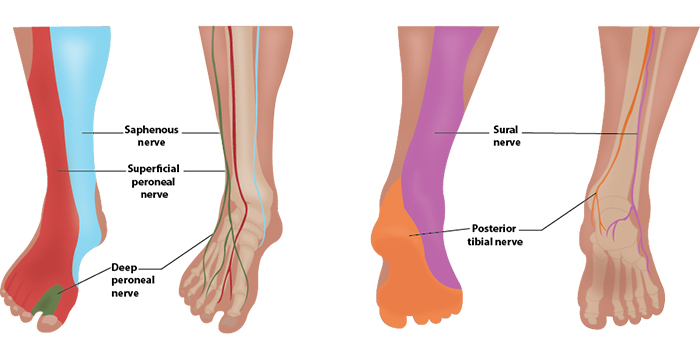
Illustration 1. Distribution of anesthesia
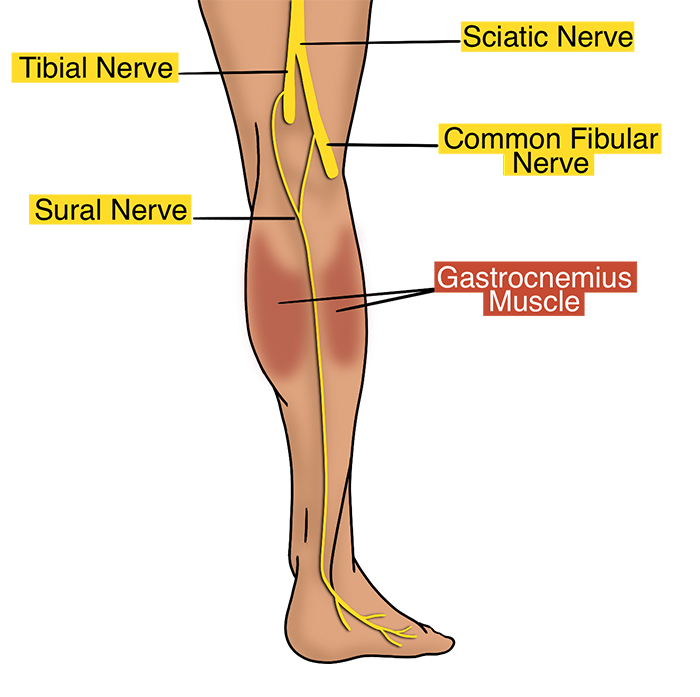
Illustration 2. Course of the sural nerve
II. Equipment
- Probe selection: 12-18 MHz linear transducer, preferably with a small footprint
- Sterile transparent film dressing (eg, Tegaderm™) or sterile probe cover
- 5ml of anesthetic of choice
- 25-30-gauge needle for skin wheal with syringe of 2-3 ml of lidocaine with epi
- 22-25-gauge needle, 1.5 inch or longer (Needle choices) depending on body habitus
III. Setup and Patient Positioning
- General procedure setup
- To expose the lateral malleolus and foot, the patient is generally supine with the leg internally rotated and knee slightly bent.
IV. Pre-scan/Sonographic Anatomy
- A high-frequency linear array probe is applied in a transverse plane posterior to the lateral malleolus.
- Probe indicator is towards the operator's left.
- The small saphenous vein is the landmark structure for this block.
- If the vein is not easily visualized, place a tourniquet above the block site.
- The tiny, echogenic sural nerve is adjacent to the vein, usually posterior.
- The nerve is easier to identify if ample gel is used and the probe is rapidly slid along the course of the small saphenous vein.
- If the nerve is not seen, the target of the block will be to inject around the vein.
Video 1. Pre-scan of the sural nerve
V. Procedure Technique
- General procedure setup
- Cover probe using sterile transparent film dressing (eg, Tegaderm™) or sterile probe cover.
- Flush the block needle with a small amount of anesthetic to remove air.
Needle orientation
- In-plane technique is preferred but often challenging at the ankle due to obstructions by the Achilles tendon and bony malleolus.
- Tracing the vein and/or nerve distal and onto the heel may open up a needle path.
In-plane approach
- After skin anesthesia, insert the block needle 3 mm at the short side of the probe.
- Identify the needle tip by sliding the probe toward and then across the block needle (Visualizing the needle).
- Slowly advance the needle towards the deep, proximal border of the nerve. If nerve location is unclear, use the small saphenous vein as the target.
- Once movement of the needle causes movement on the nerve (ie, ‘mechanical coupling’), inject 0.5 cc of anesthetic.
- Follow injection precautions.
- If the anesthetic flows around the nerve, continue to inject in 1 cc increments until the nerve is surrounded and the block volume is reached.
- If the anesthetic is seen outside the perineural space, redirect the needle and inject another 0.5 cc.
- Readjustment of the needle position may be necessary to achieve adequate distribution of anesthesia.
- Always perform aspiration and incremental injection to avoid systemic distribution of the anesthetic.
- Typical block volumes are 3–5 cc.
- Full block onset may take up to 15–20 minutes, particularly if a long-acting anesthetic was used.
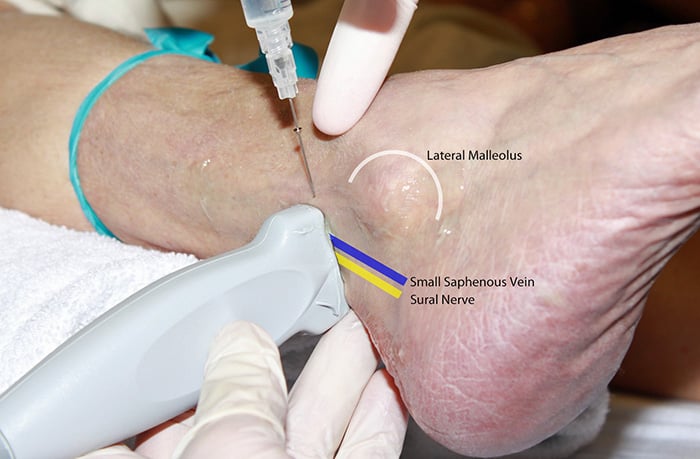
Figure 1. Sural nerve block in-plane hands
Video 2. Sural nerve block in-plane
VI. Post-procedure Care
- None required.
- Consider marking on skin with skin pen the time and date of block performed.
VII. Pearls and Pitfalls
- Don’t settle - If the nerve isn’t seen or the block site is challenging, trace the small saphenous vein from distal calf to the heel.
- The nerve will often become visible after injecting around the vein
- A single 25-gauge, 1.5-inch needle can be used for both skin anesthesia and the block in most instances.
VIII. Reference
- Redborg KE. Ultrasound improves the success rate of a sural nerve block at the ankle. Reg Anesth Pain Med. 2009; 34(1):24-8.



